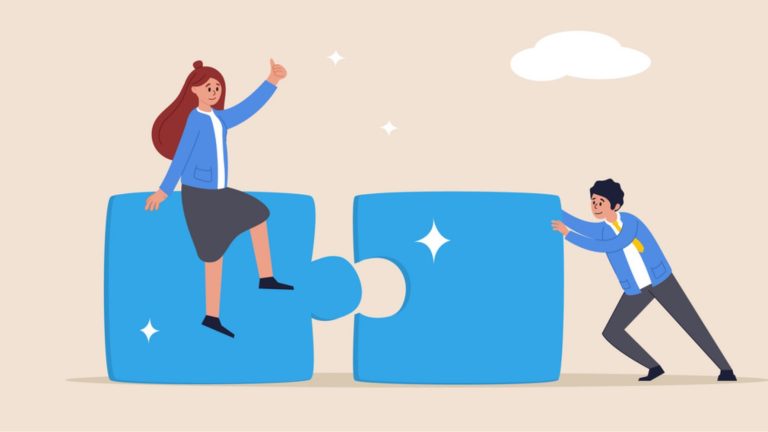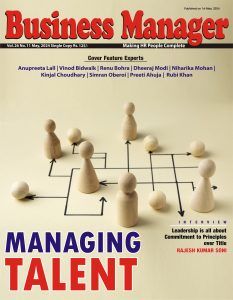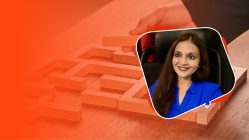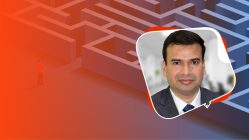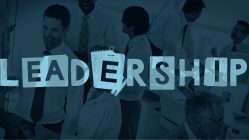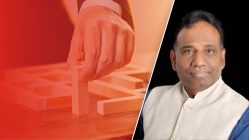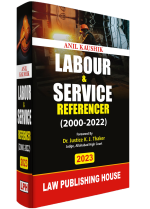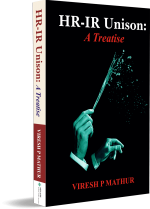Gamification, the tactical and ergonomic incorporation of elements, activities, and mechanisms borrowed from gaming environments to non-gaming ones, seems to be omnipresent today, found everywhere from language learning to job recruitment and consumer surveys to academic assessment. Gamification helps take the stress, anxiety, apprehension, and intimidation out of any process, making it more organised, easy to comprehend, and elegant to visualise. It helps parse any workflow into readily ingestible and digestible morsels appeasing to the mental palate, ensuring that the streamlining doesn’t appear daunting and exhausting. Various gaming models find diverse applications as per their suitability, however they all share some common elements as incentives to self or peer competition, conspicuous markers of achievement, quantification of performance, assignment of missions, multidimensional dynamic interactivity, rich audiovisual interfaces, and an appealing environment.
Two broad factors behind employee disengagement are lack of personal fulfilment and lack of organisational belongingness. Employee motivation and dedication to working towards the organisation’s cause and consequently the quantity, quality, and consistency of their efforts decline as they lose a sense of ongoing accomplishment both as an individual and as a significant part of the organisation. It is crucial for an organisation to ensure that its employees feel that their goals and their progress towards the same align with those of the organisation. Until members of the workforce feel that their efforts are in synchronisation and synergy with the company’s endeavours, it would be difficult for them to feel convicted to work towards the company’s success. To feel the momentum to work, an employee needs a footing in what they have done in the past to push off and ample open space lying ahead of them encouraging them to dash towards the future. A perception of having become just another cog in the work machinery is the greatest deterrent to worker engagement. In order to muster the drive to work with consistency and efficiency, a mechanism that makes employees feel enthusiastic by providing them a sense of creative satisfaction, ownership, individual identity, personal autonomy, and ample scope for growth and development needs to be implemented. Such a mechanism is best integrated in the very medium, framework, and abstract work-environment in which the employees work.
Also read: Data Theft Scandal Rocks Auto Industry, Firm Faces Rs 30 Crores Losses: Pune
Gamification can reconcile a sense of individuality with a sense of collective belonging within the organisational matrix, both of which are vital for employee satisfaction in any organisation. Employees are more likely to engage with their role and put in their best efforts if they feel a sense of achievement by completing their tasks. This sense of achievement must be linked to both short-term and long-term goals. Some degree of instant gratification being rewarded is important, particularly when we all have been so addicted to it in the digital era. Presenting tasks and sub-tasks as part of a gamified achievement-tree or similar progress course-charts would provide short-term gratification through low-hanging feel-good fruit to keep employees continuously driven and buoyant in mood, increasing focus, steadfastness, and time-efficiency as well as ensure long-term employee satisfaction and interest in the job due to gradual linear progression.
Gamification makes the causal connection between hard-work and task-completion seem less direct (while highlighting achievements and making rewards more conspicuous) without compromising systemic efficacy, thus eliciting a positive psychological response from players (read employees) who feel emotionally stimulated and mentally relaxed. This usually commands spontaneous enthusiasm and sustained dedication from them.
Implementing a vibrant, eye-catching, friendly, and interactive graphical interface for employees to carry out their work modularised into discrete and distinct tasks and sub-tasks, would reduce procrastination and work-intimidation as well as systematise working. Gamification thus helps make the task seem less daunting and be executed in a more organised manner.
Gamification helps break the monotony and ameliorate the dryness of any role. Games are able to draw uninterrupted attention and consistent focus, ensuring sustained short and long-term involvement. Even simple, rudimentarily-designed repetitive games are able to elicit, streamline, and hold significant focus from the player as they try to maximise their scores, benchmarking their performance against their own past records or those of others. Gamification effectively incentivises positive interpersonal and self-competition through regular brief dopamine bursts and has the potential to foster self and collective improvement for everyone in the organisation. By guiding the employee systematically through tasks while lending them a feeling of adventurously progressing through levels, it prevents misprioritisation and procrastination while also alleviating the debilitating, often crippling psycho-emotional burden of the entire workload.
Further, games engage with their context. Gamification should be done to guide the player through their working curve presented to them as a progress trajectory. It is important to strike a balance between breaking down the work into discrete tasks and maintaining a continuity, a sense of sustained upwards career momentum throughout the employee’s tenure of employment. Gamified workspaces shouldn’t have aesthetics, props, and rich graphics as distractions. The sensory interactions should serve to direct engagement and commitment towards the tasks to be executed, not as diversions from the workflow.
The Gamification environment should be engagingly responsive, multifacetedly interactive, and adaptive. It must reconcile personalisation with standardisation for employees to feel uniquely valued and recognised while also fitting in the bigger picture of the organisation’s overall context. Too much personalisation can make the employee feel aloof and left out, or even give them an impression that their skills are better utilised elsewhere. Excessive customisation can lead to vanity, provide an echo-chamber for personal biases, give rise to a feeling of exceptionalism (even a superiority complex), and compromise the overall synergy of each team and of the organisation. On the other hand, unrelentingly stringent standardisation for all employees could defeat the very purpose of gamification, making the gamified environment a mere proxy for the existent monotonous standard operating procedures, reducing the entire taxing exercise to a lacklustre hollow tokenism, and a wasteful one, at that. The gamified workflows should share a common platform but offer enough customisation for each employee to envision a personal journey of theirs within the shared universe. For certain organisations and departments where it suits, the gamification could also be made similar to cooperative and even massive multiplayer games. The gamification can take inspiration and draw elements and components from multiple real-world games like Simulators, Strategy Games, Dungeons-and-Dragons-based RPGs, and so on, as per their needs. Typical examples could be cooperative team games including MOBA games like League of Legends and MMORPGs such as World of Warcraft, open-world crafting games such as Minecraft, and personal adventure games such as The Legend of Zelda.
Focusing on the means shouldn’t distract us from the ends it seeks to serve. While taking creative liberties and providing ample room for creative autonomy for designers and players respectively, is important, the goal of gamification should always be minded and the game component shouldn’t be allowed to assume a life of its own. The purpose of the work-platform animation is to draw everyone towards work, not away from it. Gamification must be engaging but not digressive, lest it endanger its very objective of enhanced organisational focus. Its purpose is to provide a richer, more diverse sensory and cognitive experience to the worker, incentivise self-improvement and inter-competition through fine-scale regular reward gratification, and prevent lulls in individual and group employee activity and performance.
Facial recognition technology integrated with workstations and/or already installed workplace cameras can be used to monitor or at least periodically capture employee countenances in order to keep track of employee moods. Discreet care must be taken for such technology to not appear intrusive or controlling and not cause employees any discomfort, stigma, or botheration by making them conscious and compelling them to feign positive or negative moods for various reasons.
By organising the workload into a progress circuit that can be executed in a systematic manner, modularising tasks into readily-visualised subtasks, gamification can make work sprints smooth, sustainable, and worker-friendly. It can take off the mental burden, unclutter the headspace, and make organisational and project-specific goals easy-to-grasp for each employee, while simultaneously providing them their respective personal niches of desired growth and development. Such an environment would also make it easy for managers and leaders to conveniently track the progress and keep a ready record of the achievements and other metrics of performance of the employees working under their purview. If implemented correctly, it has the potential to become a holistic, automated employee enthusiasm-assurance system that converges individual and collective goals, bridges gaps in coordination and communication, boosts interactivity, job-involvement, individual productivity, and overall synergy, and ensures job fulfilment for each and every member of the workforce.
Stay connected with us on social media platform for instant update click here to join our LinkedIn, Twitter & Facebook


